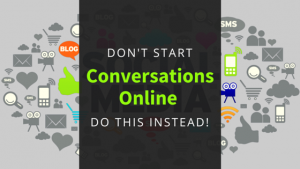
Why don’t consumers trust native advertising?
On the HBO talk show “Last Week Tonight With John Oliver,” Oliver said that native ads try to fool consumers by posing as editorial content. In the way he speaks about it, native advertising is a new fad that only exists in its current digital form. But little does he know, native advertising is only a new term for the digital age. Marketers have been trying to reach their target audiences with relevant, timely content for decades — namely in the form of affiliate marketing.
When you realize that native advertising is simply a different form of a tried-and-true tactic, you’ll be able to make it a central component of your digital media plan. Read on to learn:
- The history of native advertising.
- Where native advertising and affiliate marketing intersect.
- Key tips for crafting an effective native advertising campaign.
The Birth (and Evolution) of Native Advertising
Native advertising has taken many forms, but it all started in the early 20th century with newspaper ads that looked like editorials. It continued in sponsored radio programs and branded TV shows. You might even consider the later trend of commercials and infomercials as native advertising disguised as entertainment.
No matter the form, however, all native advertising seeks to connect with consumers on a more personal level. In that regard, affiliates have been doing native advertising for years, as the whole affiliate model is predicated on giving tools and support to marketing partners who ultimately make the decision for how they present the material to their audience. Their content and product reviews provide targeted advertiser content to consumers. Rather than an overt advertisement, native ads feel organic, blurring the lines between advertising and content.
Digital marketers have had similar success with native advertising. They’ve used paid search, Facebook posts, and tweets to connect with customers in an authentic way.
The most successful native advertisements provide affiliates with unique offers and content to spur consumer engagement. For example, fashion retailer White Plum partnered with J of J’s Everyday Fashion to offer a promotional giveaway for a year’s worth of clothing for free. Readers have engaged with the content through likes, comments, and shares.
Tips for a Successful Campaign
As a marketer, you should always strive to create advertising that’s relevant, inspirational, and timely. And when it comes to native advertising on social media, consumers are actually less skeptical than you’d think. An IPG Media Lab study found that native ads are more engaging to users and outperform standard advertising banners. Even if you sponsor or promote a tweet or post, most consumers will be comfortable engaging with it.
To use native advertising effectively, you need to apply the lessons learned by affiliate and digital marketers. Here are four strategies to take your native advertising up a notch:
1. Know your affiliates. Strong relationships with your affiliates will uncover more native advertising opportunities. Start by identifying bloggers or other websites that have an affinity for your brand and have already demonstrated authentic interest. Offer them attractive incentives, such as commissions that reward the actions you value most, and let them use your product or service themselves.
For instance, if you own a clothing retail business, send fashion bloggers your latest styles in hopes of being featured in a post or photo. This is the easiest way to get links back to your e-commerce site. In addition to products, you should also provide affiliates with valued content and direction. The more successful they become, the more likely they’ll amplify your native ads.
2. Know your audience. Your potential audience has a shorter attention span these days. That being said, you need to use lists, photos, and sponsored articles rather than long-form content to get their attention. It’s also important that you know where your audience is so you can better target them with your content.
3. Make your content stand out. According to an IAB survey on sponsored in-feed content, 82 percent of respondents said that subject-matter expertise was a critical factor in their response to native advertising. This means that consumers would rather learn more about your product than listen to your pitch.
Your content also needs to be compelling. A traditional TV commercial only has to stand out from other commercials, but native advertising needs to make waves among all other editorial content. It’s a much larger arena, so your content needs to be that much more interesting to catch someone’s attention.
Affiliates have been successful in keeping customers engaged by leveraging native advertising to tell a story. Stories are effective for hooking people and incentivizing them to develop a stake in the outcome, which will also reflect the value of your product.
4. Be honest. Oliver’s monologue on the evils of native advertising was based on the premise that these ads seek to trick consumers. But it doesn’t have to be that way. Many publishers have opted to publicize when content is sponsored, and the Federal Trade Commission often makes this a requirement. One study even found that native ads performed 12 percent better when the sponsor’s logo was clearly visible.
Being transparent about sponsored content helps inform readers. It lets them decide whether they want to keep reading. If they enjoy or learn from your content, they’ll probably appreciate your company’s honesty. Also, content partners who simply push projects because of incentives are pretty quickly sniffed out by their readers and don’t tend to do well in the long run. People are drawn to authenticity.
Native advertising has come a long way from those turn-of-the-century newspaper editorials. Now there’s a treasure trove of new formats to suit different digital platforms. The content already looks better, but when you pay attention to its quality and targeting as well, the ads are a win-win for advertisers and consumers.
Native advertising isn’t sleight of hand; it’s a way to connect with consumers on a personal level. And marketers who fail to include native ads as part of their strategy will fall far behind the curve. It’s just like any other kind of marketing: Give the people what they want, and they’ll reward your efforts with their business.
(344)







